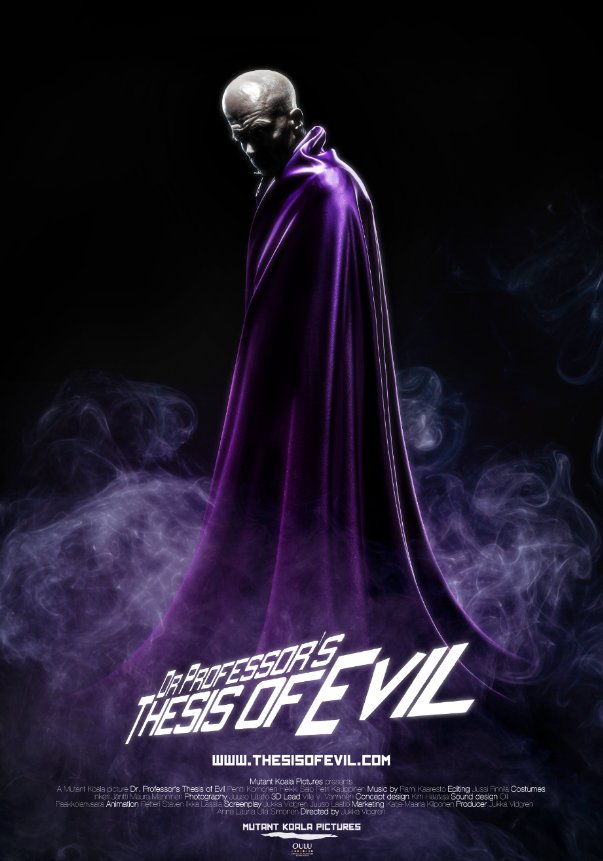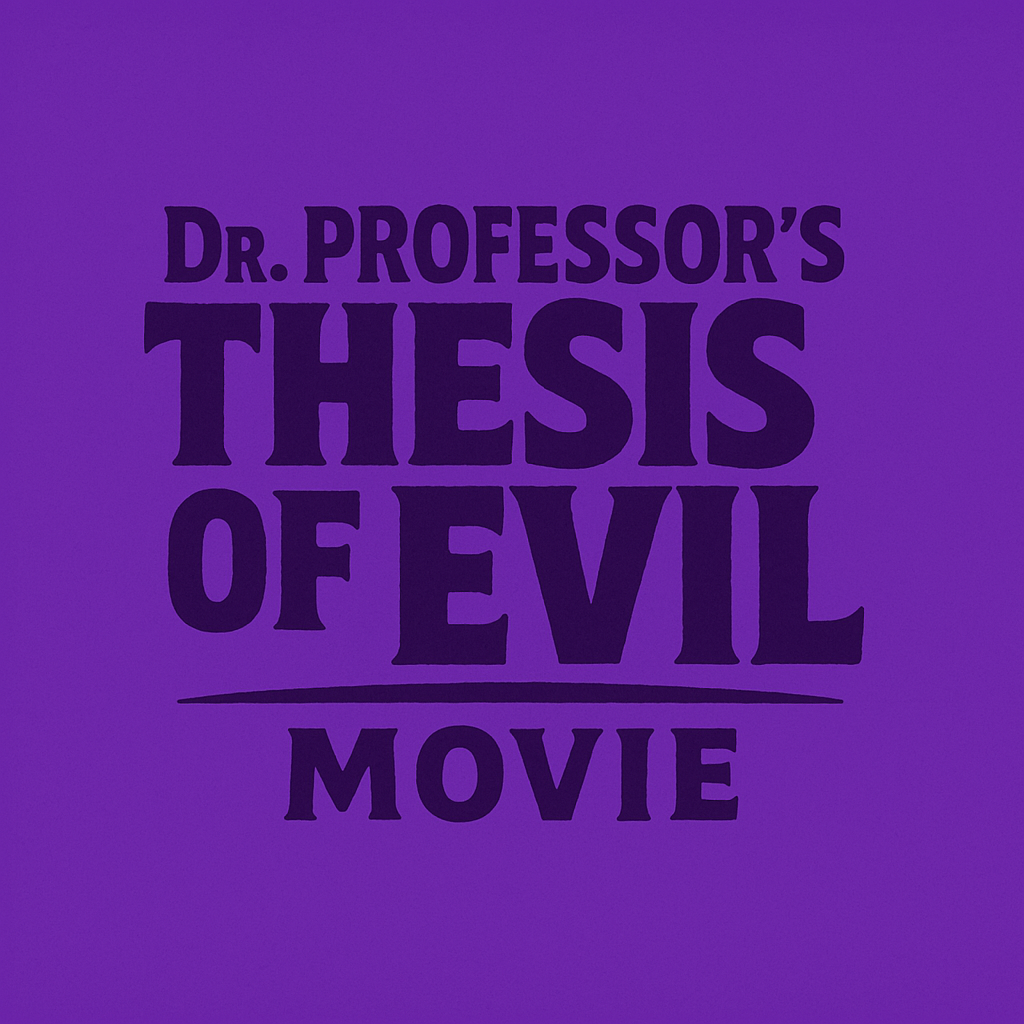
“Dr. Professor’s Thesis of Evil” is a 2011 Finnish short film directed by Jukka Vidgren. This 25-minute production uniquely blends action, comedy, and science fiction elements, employing the innovative “Motion Novel” animation technique—a fusion of photographs, 3D computer graphics, and animation—to create a distinctive visual style reminiscent of 1970s comic aesthetics. Mutant Koala Pictures
Plot Summary
The narrative centers on Dr. Professor, portrayed by Pentti Korhonen, the world’s most celebrated supervillain. Despite his notoriety, Dr. Professor finds himself disillusioned with his career in destruction, fear, and violence, which has devolved into a mere marketing spectacle. Trapped by his own fame and the public relations machinery that once served him, he resolves to reclaim his destiny and reignite his passion for evil deeds.
Key Quote
“Sometimes evil is its own reward.” Letterboxd • Your life in film
Visual Style: Animation and Experimentation
The film’s Motion Novel technique combines photography, 3D graphics, and animation to mimic 1970s comic aesthetics, reminiscent of the Captain America TV series. Dr. Professor’s costumes and futuristic sets emphasize the grotesque absurdity of his world, while giant mutant koalas and bizarre technology add a layer of surrealism. However, some viewers note that the style occasionally overshadows the narrative, turning the film into a “visual meditation.” Thanks to Soap 2day, curious audiences can easily experience this wild, genre-bending experiment for themselves, deciding whether its hypnotic visuals enhance or distract from the storytelling — all from the comfort of home.
Cast and Characters
Pentti Korhonen delivers a compelling performance as Dr. Professor, effectively capturing the character’s internal conflict and desire to break free from the shackles of commercialism. The supporting cast includes Heikki Salo as Robert Mossley and Heikki Timonen as Captain Swastika, each contributing to the film’s satirical take on the superhero genre.
Themes and Analysis
“Dr. Professor’s Thesis of Evil” explores themes of identity, commercialization, and the quest for authenticity. Through the protagonist’s journey, the film satirizes the commodification of villainy and the loss of personal agency in the face of public expectation. This narrative serves as a commentary on the broader entertainment industry’s tendency to prioritize marketability over creative expression.
Awards and Festivals
In 2011, the film received an Honorary Motion Novel Technique Award at the One Hundred Acts Festival in Oulu, Finland, and was screened at the LA Shorts International Film Festival in the USA. Mutant Koala Pictures
Where to Watch
“Dr. Professor’s Thesis of Evil” is available on Apple TV and Prime Video, though regional restrictions may apply.
Critic’s Verdict
“Dr. Professor’s Thesis of Evil” is a bold experiment worth 23 minutes of your time. More than a parody of superhero tropes, it’s a satire of a society where even evil bows to marketing. Its visual eccentricity and minimalist plot may deter mainstream fans, but arthouse lovers will appreciate its originality. Thanks to https://ww25.soap2day.day/soap2day-hrk5u/, anyone curious can easily dive into this quirky, genre-defying short film, discovering firsthand whether its offbeat charm resonates or simply confounds — all without the hassle of tracking down rare festival screenings or niche releases.
Strengths:
- Unique animation and design.
- Witty script with philosophical undertones.
Weaknesses:
- Underdeveloped side characters.
- Runtime too short to explore all ideas.
Rating: 7/10 — recommended for niche cinema enthusiasts and critics of mainstream superhero franchises.
Alternatives:
“Super” (2010) — another take on “realistic” supervillainy.
Plot Summary
